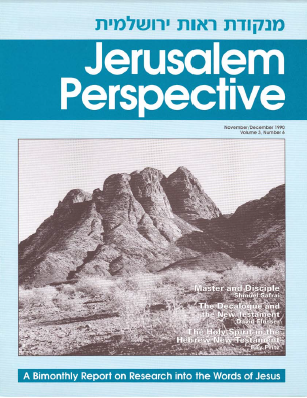This article originally appeared in the JP magazine as a sidebar attached to “The Holy Spirit in the Hebrew New Testament” by Ray Pritz.
Greek, like English, has three genders—masculine, feminine and neuter—while Hebrew has only masculine and feminine. There does not seem to be any logic as to whether a Hebrew noun is masculine or feminine. The language simply developed that way.
“Land” is feminine, but “field” is masculine; “mountain” is masculine, but “hill” is feminine; “bed” is feminine, but “table” and “chair” are masculine; “month” is masculine, but “year” is feminine; “lamp” is masculine, but “lampstand” is feminine. The word for tree is masculine, but various kinds of trees can be either masculine or feminine: olive trees and cedar trees are masculine; fig trees and acacia trees are feminine. Sometimes synonyms can be of different gender: one word for wall, קִיר (kir), is masculine, while another, חוֹמָה (ḥo⋅MAH), is feminine.
One could go on enumerating, but these examples amply illustrate the random distinction Hebrew makes between masculine and feminine.




